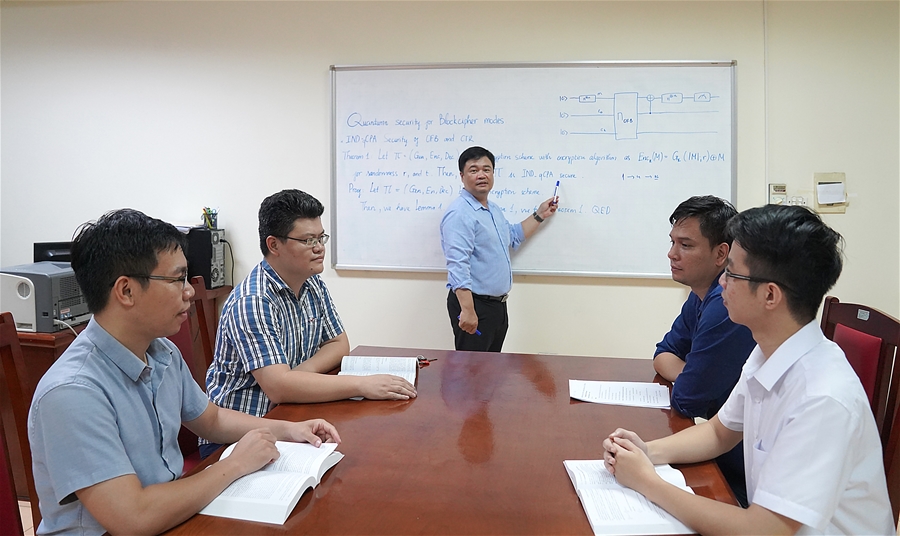Thuật toán sinh số nguyên tố tất định hiệu quả trên thiết bị nhúng
| Tài liệu tham khảo [1]. ISO/IEC 18032: “Information technology - Security techniques - Prime number generation”, first edition, 2005-01-15.
[2]. Rechard Crandall, Carl Pomerance, “Prime Numbers”, Springer, 2005.
[3]. Christophe Clavier, Benoit Feix, Loïc Thierry and Pascal Paillier, “Generating Provable Primes Efficiently on Embedded Devices”, PKC 2012, LNCS 7293, pp. 372-389, 2012.
[4]. FIPS PUB 186-3, "Digital Signature Standard (DSS)", 2009.
[5]. Brillhart, J., Lehmer, D.H., Selfridge, J.L., Tuckerman, B., Wagstaff Jr., S.S., “Factorization of bn ± 1, b = 2, 3, 5, 7, 10, 11, 12 Up to High Powers”, Contemporary Mathematics vol. 22. American Mathematical Society, 1988.
[6]. Richard P. Brent, “Factorization of the tenth Fermat number”, Mathematics of Computation, vol. 68, no. 225, January 1999, pp. 429-451.
[7]. John Brillhart, D. H. Lehmer, and J. L. Selfridge, “New Primality Criteria and Factorizations of 2m ± 1”, Math. Comp. 29 (1975), pp. 620-647.
[8]. Pomerance C., Selfridge C., Wagstaff, J.L., “The pseudoprimes to 25.10e9”, Mathematics of Computation 35, pp. 1003-1026, 1990.
[9]. Jaechke, G., “On strong pseudoprimes to several bases”, Mathematics of Computation 61, pp. 915- 926, 1993.
|
Trần Duy Lai, Hoàng Văn Thức, Trần Sỹ Nam




















